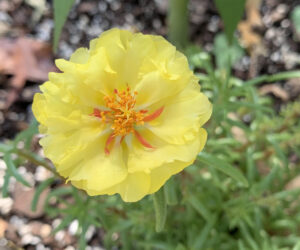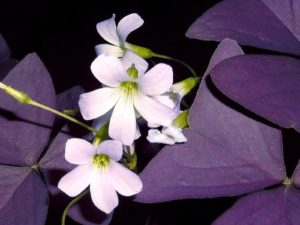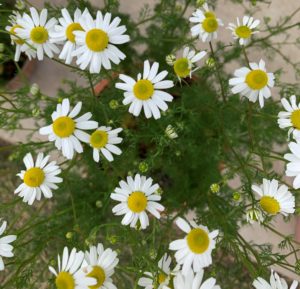If you are looking for a beautiful, flowering shrub that is heat-tolerant, look no further. The Texas Star Hibiscus (Hibiscus coccineus) meets this criteria and more! A native of the Southern United States and the Pacific Coast, this low-maintenance hibiscus is hardy in zones 7 through 11. It may die back in the winter in zones 5 to 8 but if protected and mulched, it should regrow in the spring.
The Texas Star hibiscus boasts five-petal flowers that form spectacular star-shaped blossoms, hence the name. Also referred to as the swamp hibiscus, red swamp hibiscus, scarlet rose mallow, and red hibiscus, its blossoms are vibrant red. The hibiscus coccineus alba displays pure white blossoms instead. Both varieties have blooms that measure between 3 to 6 inches (7.6 to 15 cm) in diameter. The stunning blooms last only one day, but, thankfully, each plant can daily put forth multiple flowers during the summer and early fall months. It is no wonder that the18th century Founding Father, George Washington, referred to it as “a most elegant flowering plant.”[1]
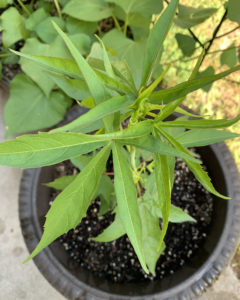
The Texas Star grows to a height of between 3 and 8 feet (1 to 2.4 meters). Its long, serrated leaves are sometimes confused with marijuana leaves because of their hemp-like appearance. But there is nothing illegal about this easy-to-grow garden beauty.
How to Plant Texas Star Hibiscus Seeds
Seeds from hardy hibiscus varieties like the Texas Star will need to undergo cold stratification, the process that tricks seeds into going into hibernation, something that is necessary for germination. (Seeds from tropical varieties of hibiscus do not need stratification but may need scarification.)
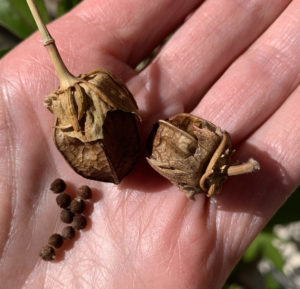
To stratify the seeds in the fall or winter, place them in a moisture-proof container outside where they will experience winter temperatures. Or place dry seeds in a sealed package or container in the refrigerator for 60 to 90 days. Alternatively, some report that if you are short on time, you can try placing the seeds in a moisture-proof container in the freezer for a few days. Once the stratification process is complete, allow the seeds to thaw.
The next step you need to take is called scarification. Texas Star Hibiscus seeds, like okra and beet seeds, have a tough outer coating that, if soaked overnight in water or carefully scarred, can help increase germination rates. To learn more about scarification and the various methods, check out this helpful article.
This article contains affiliate links. If you make a purchase using one of these links, I will receive a very small commission at no additional cost to you, and it will help me maintain this website. Rest assured, I only recommend products I actually like!
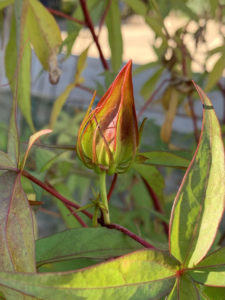
About six weeks before the last expected frost, sow seeds indoors under a grow light using small pots filled with a loose potting mix. Gently place the seed about ¼ inch (0.6 cm) deep in the mix. Or, if you prefer, you can sow them directly into a raised bed or container after the threat of frost has passed and the soil temperature is about 65oF (18oC). If you are unsure if the soil is warm enough, you can use a soil thermometer. Whether starting seeds indoors or out, keep the soil moist but not soggy. The plant can adapt to somewhat drier soil once it matures. Seeds will germinate in one to three weeks. Plants will begin to flower about three to four months after germination.
Soil Requirements
This amazing hibiscus can grow in a variety of soil types but it thrives in soils that are moist and have good drainage. It prefers a soil pH that is mildly acidic to acidic. You can test your soil using a quick, inexpensive test kit like the one I use. If your soil is too alkaline, you can learn how to increase the acidity in this helpful article.
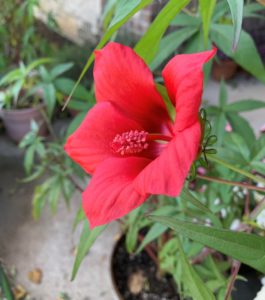
Container Requirements
This hardy hibiscus looks amazing in containers! The root ball is wider than it is deeper so look for a pot that is at least 12 inches (30 cm) in diameter. Once the plant matures, you can transplant it into a larger container.
In winter, container plants will need to be moved indoors or to a greenhouse if the temperature drops below freezing for very long. Another option is to mulch the plant well and cover it with a plant blanket to protect it.
Sun and Water
For this flowering shrub to thrive and produce an abundance of blooms, it will need at least eight hours of full sun. It will bloom if it receives at least six hours, but it may become leggy and will have fewer flowers.
Water to keep the soil moist but not soggy.
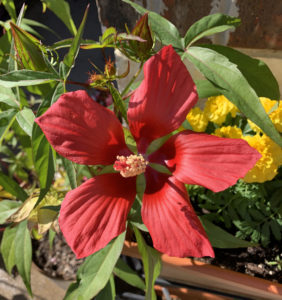
Fertilizer
Fertilize your star hibiscus in the spring and summer using a fertilizer that is higher in nitrogen and potassium than it is in phosphorus. An organic fertilizer like this one with an NPK of 6-4-6 works well. If you would like to know more about fertilizer and NPK (nitrogen, phosphorus, potassium), check out this helpful article.
Pollinators
One of the benefits of growing hibiscus is that they attract pollinators. Bees, butterflies, and hummingbirds will enjoy this plant as much as you do! Of course, the vegetable plants in your garden that require pollination will thank you, too!

How to Propagate with Cuttings
Cut a 5 to 6 inch (12 to 15 cm) long stem and dip it in rooting hormone like this one. Insert the cutting approximately 3 inches (8 cm) into a container filled with loose soil. Water the cutting and place it in indirect sunlight. Keep the soil moist but not soggy. When the cutting produces new leaves, you can transplant it to full sun.
Pruning
A light pruning of branches or tips during the growing season can encourage this tall shrub to develop a bushier look. You can also prune dead or diseased branches. Otherwise, no pruning during the growing season is recommended.
At some point, however, hibiscus, like other shrubs, can be cut back. There are differing opinions as to when this should occur. Some advocate cutting the branches back in the late fall to winter, after the plant has lost its leaves. Still, others advise waiting until spring to do any major pruning as there is a chemical process that occurs in the leafless branches during the late fall-winter that prepares the plant for hibernation. My preference is to wait until the spring.
To prune hibiscus in the spring, cut the branches with a pair of clean, sharp pruning loppers or bypass shears just above the nodes. Be sure to leave a few nodes on each branch for new growth to develop. Do not cut back more than 2/3rds of the plant.
Pests and Diseases
Some of the pests that may be attracted to the Texas Star are grasshoppers, aphids, Japanese beetles, mealybugs, spider mites, thrips, and whiteflies. They will often hide on the underside of leaves so be sure to inspect the plant often.
Diseases that may affect the plant include blight, rust, and leaf spot. Neem oil is a good organic option to treat these diseases. You can learn more about this natural fungicide and pesticide, as well as find a DIY recipe in this helpful article.


Harvest Seed
Hibiscus can reseed when a mature seed pod falls to the ground. But you can harvest the seed pods before this happens and plant them in a preferred location the following spring or give them to friends and family.
The seed pod starts out green and looks somewhat like an unopened flower bud. Leave it on the plant until it turns brown and completely dries out. Cut it off and remove the seeds. There are about ten to twenty per pod. Make sure they are completely dry before storing them in a small bag and seed envelope. This bag and envelope also work well for cold stratification.
Winterize
Texas Start hibiscus can usually withstand mild winters. To protect the roots, you will need to mulch around the base of the plant. In addition, you will need to cover the plant with a plant blanket when there is a frost or freeze.
If you are growing the hibiscus in a container, you can move it to a greenhouse where the temperature is 55o F (13o C) or more. It will need to receive at least a couple of hours a day in full sunlight to survive.
Thank you for reading this article! If you found it helpful, please consider sharing it with others via email and social media!
[1] George Washington’s Mount Vernon Gardens refer to it as the Scarlet Rose Mallow. https://www.mountvernon.org/the-estate-gardens/gardens-landscapes/plant-finder/item/scarlet-rose-mallow/

